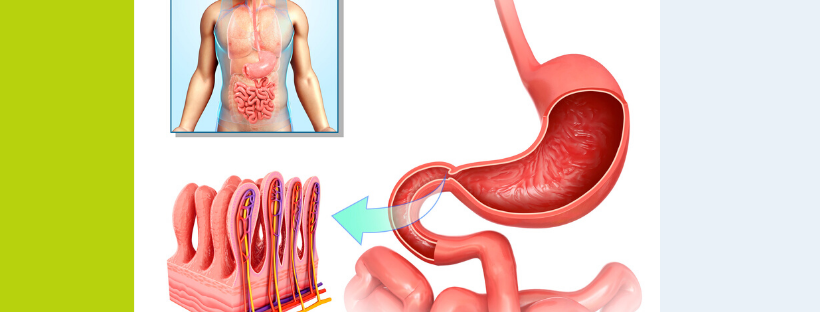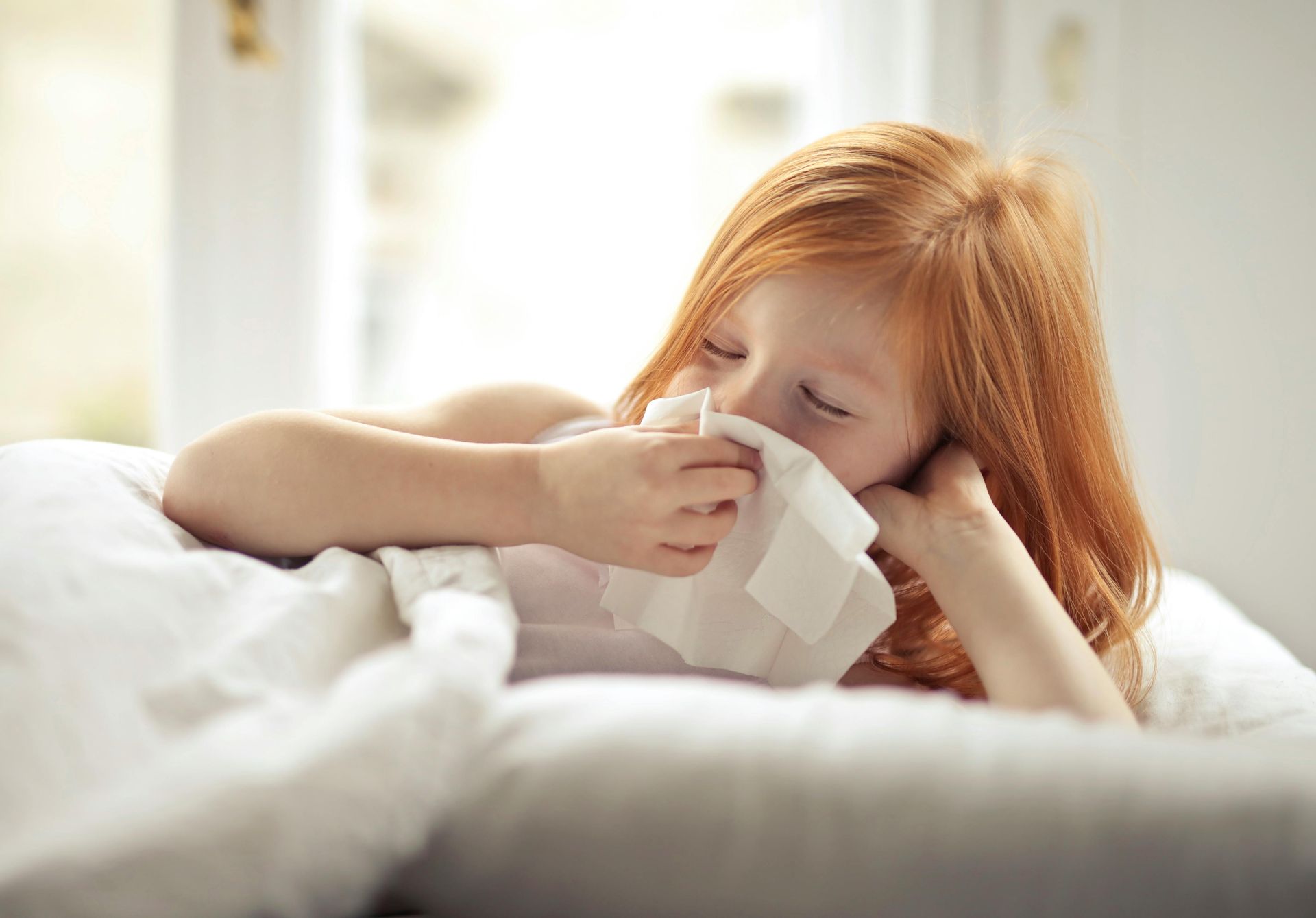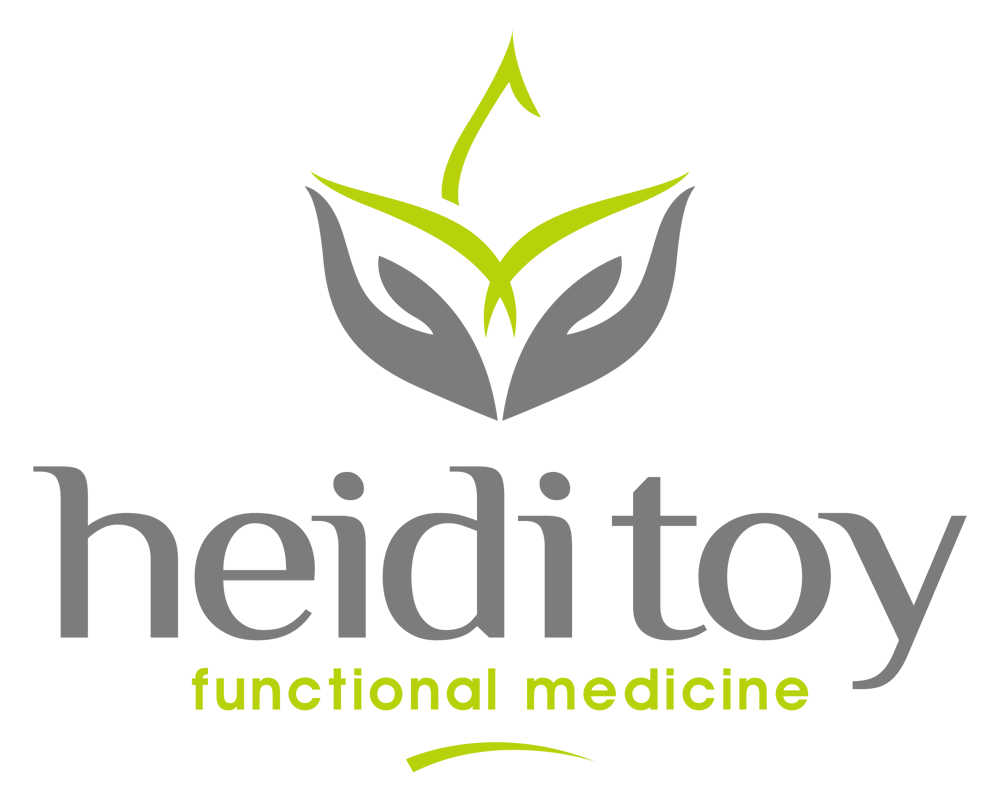How Healing Your Gut Can Help Autoimmune Disease
If you are experiencing symptoms of autoimmune disease (fatigue, unexplained hair loss, skin rashes, digestive issues, unexplained weight gain or weight loss, achy and feverish, etc) healing your gut would be a great place to start.

Because of your own body’s particular epigenetic code, what you eat plays a crucial role in the management of chronic disease, including many autoimmune diseases. Even the most perfect diet is seen as toxic if the integrity of your digestive tract is compromised.
Hippocrates said, “All disease begins in the gut.” From my clinical experience, I would have to agree. The gut is not only responsible for digestion and absorption of food, but our intestines also play a major role in our immunity.
If the absorptive surface of the gastrointestinal tract was taken and laid out flat, it would span the size of a tennis court, but it doesn’t end there. The gastrointestinal system is covered with a protective thick band of beneficial bacteria, virus, fungus, and other organisms. Microorganisms are inhabitants of our body, and they outnumber our own cells ten to one. We carry two to six pounds of bacteria in our gut.
These very microbes play a vital role in our health because they are our immunity, digestion and absorption, and neurotransmitter synthesis. It is estimated that 85 percent of our immune system is housed in our intestines. The beneficial bacteria of the gastrointestinal tract produce antibacterial, antifungal, and antiviral substances and protect us from illness. Moreover our gut bacteria have ongoing communication with the rest of our immune system, and it is the microorganisms in our intestine that keep it in balance.
A gut ecosystem should consist of 85 percent beneficial microbes and 15 percent opportunistic or bad. This gut flora also serves as a protective barrier for what can leave the gut--nothing is able to get through the gut wall unless it is accompanied by an enzymatic escort, which packages it up and takes it through the intestinal wall out into the bloodstream. When beneficial gut flora is damaged (by a round of antibiotics, pharmaceutical grade drugs, over consumption of processed foods, or pesticides), bad gut flora can overgrow leaving the gut wall unprotected, striped and bare with the potential to dissolve. Thus the wall of the intestine becomes permeable—a condition known as “leaky gut”
or intestinal permeability. This leaves the door open for an autoimmune disease
to sneak in and take up residence.
Many food particles look similar to our own body tissue in their molecular structure (known as a molecular mimicry), specifically foods with a protein component like wheat (gluten and gliadin). While I'm a proponent of removing inflammatory foods like gluten from a person’s diet while they heal, it is not the end all be all: healing and sealing the gut and re-inoculating the intestinal tract with good gut flora is.
How to Heal Your Gut
Healing and re-inoculation of the gut is possible, and there is a method to it, starting with what you eat and what you absorb or digest. Your diet would consist of namely homemade bone broth (to heal and seal your gut lining) and probiotics in the form of fermented foods. While probiotics purchased in capsule form can be a great supplement, the best place to get your probiotic is from your diet—it is more economical, and fermented foods contain 100 times more probiotic than a supplement.
Fermented foods need to be introduced slowly. As mentioned above, good gut flora's job is to keep invaders out, and bad bacteria is seen as an invader. When the opportunistic gut flora starts to die off, part of its survival is to emit a gaseous toxic substance. These toxins are what cause health issues. If you have never eaten fermented foods before, you need to start very slowly and gradually, adding only teaspoons of the food into your diet at a time. If you experience “die off,” don’t stop, simply back off.
Eliminate Inflammatory Foods:
- All grains and anything made out of them: wheat, rye, rice, oats, corn for example.
- All starchy vegetables.
- Sugar and anything that contains it.
- All beans, including soy and garbanzo beans (chickpeas).
- Lactose found in dairy products, and anything that contains it.
Consume Broth and Meat:
- Bone broth (the real stuff, not bullion from the store that is artificial and nothing but a chemical). Find a grass-fed cow, bison, or free-range chicken farmer and get long bones and knuckles from them. Slow cook them in a crockpot for 24 to 72 hours. This is just like your mom or grandmother used to do when she made homemade soup from a soup bone. This broth is loaded with amino acids, gelatin, glucosamine, fats, vitamins, and minerals that are beneficial to the gut wall and will heal and seal your gut.
- Meats from pasture-raised animals such as beef, chicken, and pork and line caught fish cooked in the bone broth.
If you are experiencing symptoms of autoimmune disease (fatigue, unexplained hair loss, skin rashes, digestive issues, unexplained weight gain or weight loss, achy and feverish, etc) healing your gut would be a great place to start. You can follow the guidelines laid out in this article, but if you really want to dig deeper and get a plan that is specific to your individual body’s needs, I offer a 20-minute health discovery session for $49 through my website.
Contact me today and we’ll get you on the path back to health.
References:
Alessio fasano m.d.. (n.d.). Retrieved from http://medschool.umaryland.edu/FACULTYRESEARCHPROFILE/viewprofile.aspx?id=1891
Campbell-McBride, N (2012). Put Your Heart in Your Mouth. United Kingdom: Mediform Publishing.
NIH human microbiome project defines normal bacterial makeup of the body. (2012, June 13). Retrieved from www.nih.gov/news/health/jun2012/nhgri-13.htm.
The human gastrointestinal (gi) tract. (2012, October 20). Retrieved from http://users.rcn.com/jkimball.ma.ultranet/BiologyPages/G/GITract.html.
https://www.nih.gov/news-events/news-releases/nih-human-microbiome-project-defines-normal-bacterial-makeup-body
Don't Miss Out On More!

Heidi Toy FNTP
I help people all over the world heal by identifying and treating the root cause of their body imbalances. Through diet and nutrition, I guide them towards wholeness and balanced lives.
Heidi Toy Functional Medicine Blog

For many of us, our experience with food comes with some sort of baggage. Maybe you eat to cope with stress, anxiety or depression. Maybe you’ve grown up with value-words placed on food such as “junk” and “healthy,” and told you couldn’t eat the “good stuff” (brownies and ice cream) until you finished the “yucky stuff” (broccoli and lettuce). Or, even more serious, maybe you or a loved one has struggled or is struggling with an eating disorder. Food is amazing and life-giving. It can be used as a means to celebrate, socialize, or simply just provide fuel for the body. Our relationship with food shouldn’t be a difficult one, it should be an enjoyable one. A way to get to that healthy place in your relationship is to practice mindful eating. Mindfulness is a Buddhist concept of mediation that can help you recognize emotions and physical sensations present. Through mindful eating, you can learn to truly pay attention to your experiences, cravings and physical cues. The basics of mindful eating are: Eat slowly, without distraction. If you are eating with others, take a least five minutes at the start of the meal to enjoy the food on your plate before engaging in discussion. Pay attention to your body--are you still hungry, or are you getting full? Learn to distinguish between cravings and true hunger. Use all your senses when you sit down to a meal. Make an effort to notice how the food looks, smells, tastes, feels in your mouth, and sounds when you chew. Appreciate your food, who has prepared it (even if it’s you--what an accomplishment!), and where it comes from. Being mindful of your experience will help you slow down while eating. This can prevent overindulgence by making the act of eating intentional instead of automatic. It will also help you become aware of triggers that make you want to eat (are you truly hungry at 9pm every night when you sit down to watch that Netflix show, or do you just pour yourself a bowl of Chex Mix because that’s what you always do?). Knowing your triggers can give you time to process what’s truly going on and the ability to react properly.

Here are the essential functional medicine steps for Fifth Disease! If your child comes home with bright red cheeks that look like they’ve been “slapped,” chances are they may have fifth disease, also known as erythema infectiosum. This mild viral illness, caused by parvovirus B19, is common in kids and often spreads t

Successfully healing Adrenal Fatigue requires a holistic approach focussed on fixing the root cause of your problems and supporting your body through the healing process. This means we are going beyond just temporary symptom relief. We want you to return to vibrant health so you can get back to the active and healthy lifestyle that Adrenal Fatigue is holding you back from. (Adrenal Fatigue is more accurately known as HPA-D. Check out my blog HPA-D vs Adrenal Fatigue to learn more.)Again, we would be completing further testing to get to the root cause of your issues, but this protocol is a great starting point for healing. We focus on five essential areas for fast and long-term healing.

I want it! Sooooooo bad. But I want to lose weight, too. It’s not on my list of healthy, squeaky clean healing foods, but what will one little bite hurt? I can start again fresh and clean tomorrow. When brownies call your name and you are trying to break up with them, it is difficult to avoid the urge to want to indulge. But you know if you give in that you will berate yourself with guilt for the next 24-48 hours and the tsunami of eating everything off-plan will take over your life. One bite will start an avalanche... But you just can't stop thinking about the pan of brownies you made for the kids.

Did you know most people didn’t have refrigerators in their homes until well into the 1900’s? It wasn’t even invented for large scale commercial use until the mid 1800’s [1]. So how did people keep their milk cold and make their food last longer? Fermentation. It sounds like a gross concept, because we often associate fermentation with a bad odor, but foods like cheese, yogurt, sauerkraut and pickles are all fermented foods. And those aren’t gross, are they? Well, some might disagree with me about sauerkraut, but that’s beside the point. Fermented foods are digestive aids. Microscopic living organisms in fermented foods help extend the food’s shelf life, enhance flavor, and help the body absorb minerals. These organisms pre-digest the food, getting rid of harmful components, and create more vitamins and enzymes than the food began with. Enzyme-rich foods have many benefits including [2]: Increase digestibility of food we eat Boost immune system Increase alkalinity; neutralizing pH levels Provide a healthy balance of friendly flora in the gut (Learn more about your microbiome in my other blog posts ) Tone the colon and help with elimination Control cravings for unhealthier foods Eliminate toxins and undigested wastes in the body In the “old days,” people use to ferment all kinds of foods through pickling, canning, pasteurization and added salt. Nowadays, however, large scale fermentation has lost many of its nutritious benefits due to the need for speed to get the product on the shelf as fast as possible and as cheap as possible. The only true fermented foods you will find are sauerkraut, kombucha, yogurt and kefir, beans, wine and beer, some meats (such as salami and pastrami), legumes and nuts (such as tofu, soy sauce and miso), sourdough bread, and various kinds of vegetables [3]. Fun facts about sauerkraut: The Germans “stole” it from the Chinese! Sauerkraut (probably not labeled as such for the Chinese, but the same recipe) was one of the main foods for those who built the Great Wall of China. Genghis Khan brought it to Eastern Europe during an invasion. It also contains high levels of vitamin C, and sailors often took it on long journeys to prevent scurvy.

How can we best keep blood sugar stable? Do what our body is designed to do – use fat for energy. Our species did not survive the Ice Age because of vanilla coffee lattes and cheesecake. Throughout most of our history, we ate a diet that was likely 50-70 percent fat. Look at the old family photo albums, specifically pictures of people in the first half of the 1900s, before we had so many processed foods. You won’t see many fat people--in fact, most look darn skinny. If they lived on the farm, they ate lots of eggs, meat, milk, and vegetables out of their own backyards. “Diet foods” were non-existent. Heart disease was almost non-existent. Our metabolism is designed to work much better with fats better than with sugar. Fats provide the slow and steady fuel our body likes to use for energy. Think of fats as a slow-burning log on the fire. One log (i.e. one meal containing fats) lasts for hours. Starchy carbs, on the flip side, are like kindling. You constantly have to throw more twigs (chips, pasta, bagels) to keep the fire burning. The first step is to know your sugars by reading the labels, and then avoid said sugars as much as possible.








































































































